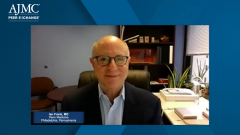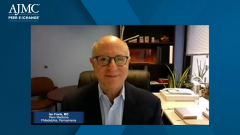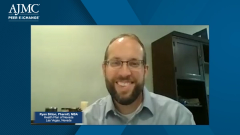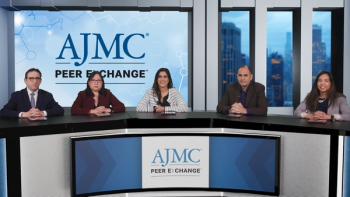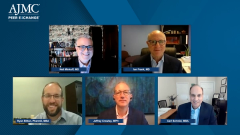
Barriers to PrEP Uptake
Experts in HIV discuss methods to address the low rate of HIV PrEP uptake among at-risk individuals.
Episodes in this series

Neil Minkoff, MD: One of the issues that’s really important around pre-exposure prophylaxis [PrEP] is that if you look, at least from the CDC [Centers for Disease Control and Prevention] data, and granted the data may be 3, 4 years old, the percentage of patients who should be taking PrEP [and are doing so] is much lower than one would anticipate. Maybe 20% or so. What is limiting the uptake of PrEP? We talked about once you’ve started PrEP, are you taking it? What’s limiting people from starting on PrEP, given the importance of it therapeutically and what seem to be very clearly defined benefits?
Carl Schmid, MBA: A lot of times doctors don’t talk about these issues with their patients, particularly in the South, particularly among certain communities. As we’ve said, gay men are the ones who probably are in most need of this, a lot of Black women, and injection drug users as well. These are difficult conversations, and a lot of providers don’t even talk about the need for PrEP. Then, there’s been cost-sharing associated with PrEP. If you’re in private insurance, up until now, there are people still having to reach their deductibles in the cost-sharing for the drug. Then, all the associated laboratory services as well. I think that’s another reason why there hasn’t been a great uptake, and then the persistence issue as well.
Neil Minkoff, MD: I’d like to get everybody to weigh in on this as best we can.
Ian Frank, MD: I think those are a number of critical obstacles. There’s a level of disenfranchisement from the health care system on the part of many young racial and ethnic minorities, as has been said, the folks who may be in greatest need and potential recipients of benefit from PrEP. Folks are less likely to feel comfortable accessing care. A lot of young, healthy folks don’t want to be on a pill every day. People want to take as few medicines as possible, and if you’re not used to taking a pill every day, there’s got to be a real reason for you to want to start. I think that factor alone is an obstacle for some individuals.
Jeffrey Crowley, MPH: If I could jump in….
Neil Minkoff: Please.
Jeffrey Crowley, MPH: I think it’s all of the things that have been mentioned. It’s not 1 thing, but the heart of our epidemic is in the southern United States, and many challenges come together there. First, geography. This is the region of the country where more people live who are more than an hour drive away from medical care. Five of 6 states that have uninsured rates above 12% are in the South. They have lower health literacy. There’s so much anti-Black racism, but also antigay stigma that comes together. Also, their health system capacity is the weakest. Thus, when we think about these vulnerable populations that need more care and attention, they live in the place with the fewest providers who are less able to give that detailed information, and to take the extra step kind of care to really support them getting into care. It’s not 1 thing as much as it’s 5 things that come together that create an insurmountable barrier to accessing PrEP sometimes.
Neil Minkoff, MD: What could be done to reduce some of these barriers? Some of the things you’re mentioning, many of you have mentioned, are not particularly easy barriers to address. We’re not going to instantly be able to reduce the number of people who live within an hour of medical services. There are some societal and social determinants of health that need to be addressed but are not going to be quick fixes. What are some of the things that could be done in order to do outreach or to identify the appropriate patient populations or to work toward those patient populations you guys have mentioned as being underrepresented in the PrEP population? What are some of the things we could do soon?
Jeffrey Crowley, MPH: If I could jump in, and hopefully others will add. I don’t believe that telehealth is this magic solution, but COVID-19 has taught us a lot about telehealth. Telehealth is a place where often people don’t have to worry about being exposed in a doctor’s waiting room. They can go and they can be seen, paired with self-sample collection, and subsequently, the burden for both the individual and the provider could be eased. If you want them to screen every 3 months, they get a kit in the mail, they do their self-collection, and they mail it off. I’d also say relying on peer support. I don’t look like the target population in a lot of cases, but finding someone who does, who says, “I’m on PrEP, this is why I got on it,” can go a long way. Or, “I had this fear about PrEP and this is the answer I got.” Finding people that look like our target populations could be the most effective ambassadors for greater PrEP uptake.
Neil Minkoff, MD: Others, please?
Ian Frank, MD: Well, I think that those suggestions are really important ones. Demedicalizing PrEP I think would go a long way to its adoption. The guidance has us seeing patients who are coming in for PrEP services more often than I may be seeing my HIV-infected patients.
Neil Minkoff, MD: Yes.
Ian Frank, MD: That’s a problem. Having long-acting therapies would make a difference. Imagine being a young Black man in Alabama and living at home with your parents and taking a daily pill, if your parents don’t know you’re a gay man, and how stigmatized you may feel. If you could go to your provider’s office, get a shot that will last you a couple of months, that would be a major advance and probably something you’re more likely to be willing to do because you’ll be able to do that in a more confidential way. Confidentiality, I think, is a big component of this and also feeds into the anonymity of getting a kit mailed to you or things like that, being able to access a service about which people are often uncomfortable. Thus, anything that we can do to relieve that kind of burden, I think, would be a major advance and make PrEP far more feasible for many people.
Neil Minkoff, MD: Carl, you look like you wanted to jump in.
Carl Schmid, MD: Yes, We’ve got to as a society talk about HIV more. There’s still a lot of stigma surrounding it, particularly in the South and more conservative areas of the country. I think having help from our federal government will help, and the CDC. There is a concerted effort to end HIV right now in our country, and having campaigns, public awareness campaigns, associated not only with HIV prevention like PrEP, but HIV treatment as well, because we need to be talking about both. Also, provider education. I think that’s one of the big areas right now. We have to make sure that they do talk about sex, and it’s not only stigma with HIV. There’s still a lot of stigma against the LGBT [lesbian, gay, bisexual, and transgender] community. We need provider education and provider sensitivity, not only to LGBT but all different racial and ethnic backgrounds. Make sure they’re culturally competent, available to, as Jeff said, have that peer support. But we’ve got to talk about it more. There are campaigns from our federal government, from the CDC, to talk about PrEP via radio ads, and things like that. But it needs to be a lot more common and discussed a lot more between doctors, payers, and in society as a whole.
Transcript edited for clarity.
Newsletter
Stay ahead of policy, cost, and value—subscribe to AJMC for expert insights at the intersection of clinical care and health economics.

